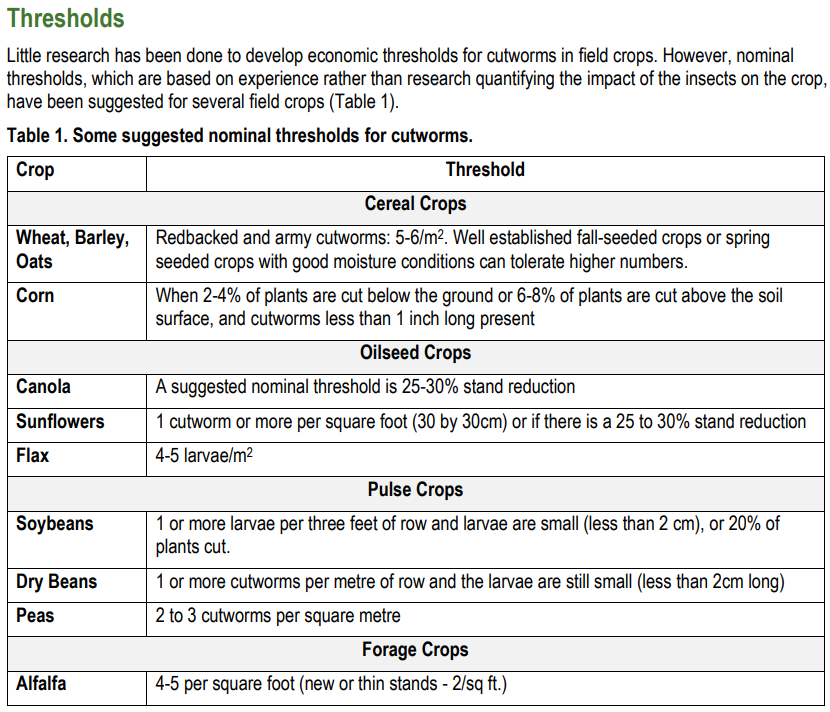Cutworm scouting spans April to late June across the Canadian prairies! Scout fields that are “slow” to emerge, are missing rows, include wilting or yellowing plants, have bare patches, or appear highly attractive to birds – these are areas warranting a closer look. Plan to follow up by walking these areas either very early or late in the day when some cutworm species (or climbing cutworms) move above-ground to feed. Start to dig below the soil surface (1-5 cm deep) near the base of symptomatic plants and also any healthy plants immediately adjacent to missing rows or wilting or clipped plants. Some cutworms feed while remaining just below the soil surface, clipping then pulling the plant below the soil surface as they munch away! If the plant is well-established (e.g., perennial grass or legume), check within the crown plus in the adjacent soil. The culprits could be cutworms, wireworms, or more!
Important: Several species of cutworms (Lepidoptera: Noctuidae) can be present in fields. They range in colour from shiny opaque, to tan, to brownish-red with chevron patterning. A field guide is available to help growers scout and manage the various species of cutworms that can appear in field crops grown on the Canadian prairies. Cutworm Pest of Crops is available free in either English or French! Download a searchable PDF copy to access helpful diagnostic photos plus a table showing which larvae are active at different points in the growing season!
Other vital resources to scout and manage cutworms include:
● For anyone on the Canadian prairies, Manitoba Agriculture’s Cutworms in Field Crops fact sheet includes suggested nominal thresholds for cutworms in several crops (Table 1). The same fact sheet describes important biological information, and provides great cutworm photos to support in-field scouting!
● For Albertans….. If you find cutworms, please consider using the Alberta Insect Pest Monitoring Network’s “2025 Cutworm Reporting Tool” then view the live 2025 cutworm map updated daily. Review the live map to see where cutworms are appearing then prioritize in-field scouting accordingly.
● Cutworms were featured as 2024’s first Insect of the Week.

Text and table extracted from Gavloski, J. 2024. Cutworms in Field Crops. Manitoba Agriculture. Pages 1-6. Available at https://www.gov.mb.ca/agriculture/crops/insects/pubs/cutworms-in-field-crops.pdf (retrieved May 8, 2025).


